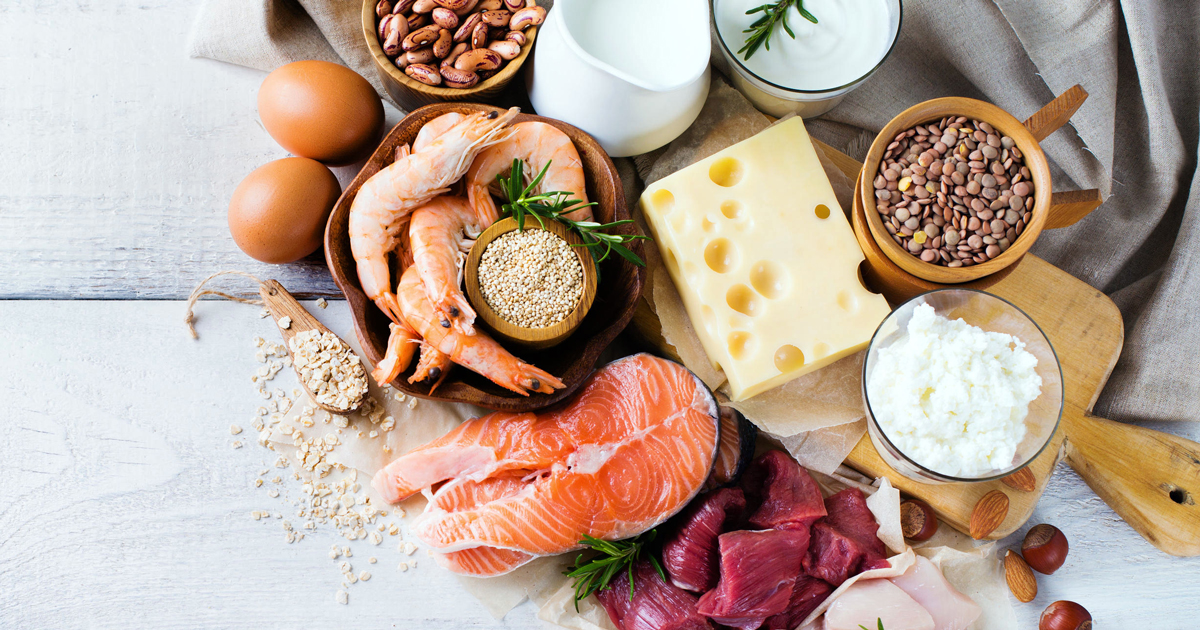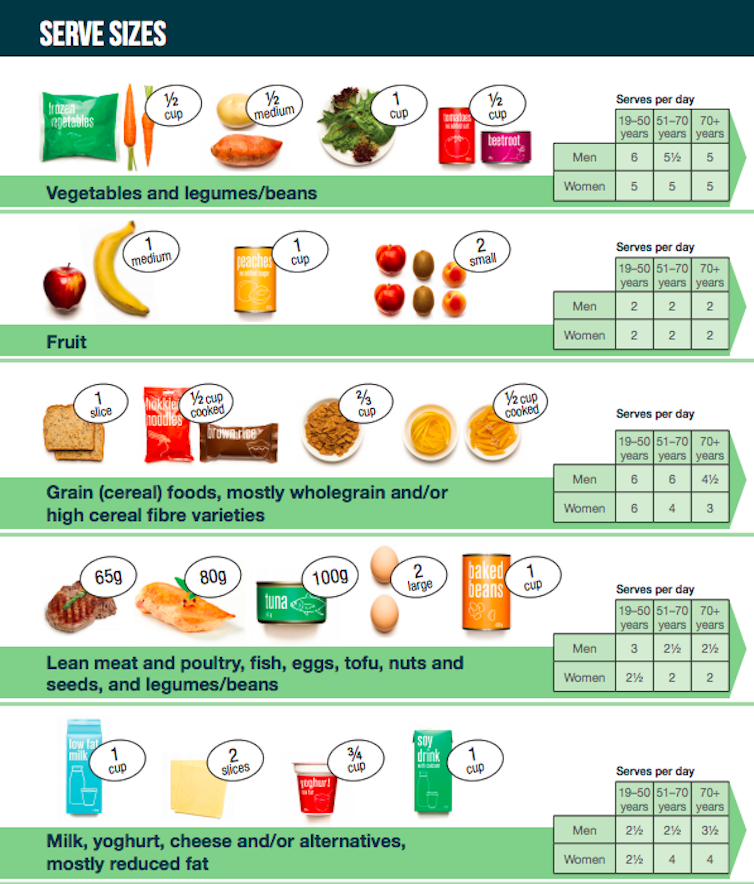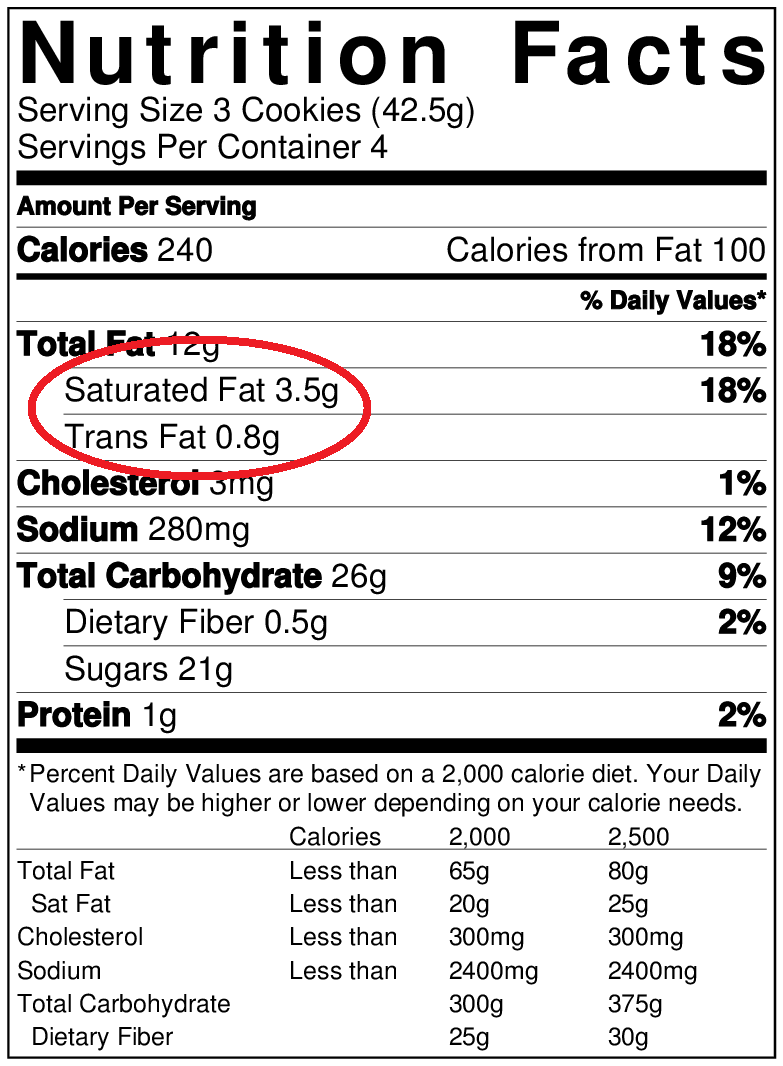45 saturated fat on food labels
How to read nutrition labels | safefood Some labels use colour coding to show at a glance if a food is high, medium or low in fat, saturated fat, sugar and salt. Low (green) - the best choice. Medium (amber) - okay most of the time. High (red) - only choose occasionally. If the label isn't colour coded, use our label decoder as a guide. Fat Content on Food Labels - Reading Between the Lines When it comes to listing fat on food labels, manufacturers are required to only list total fat and saturated fat. Some also voluntarily list monounsaturated and polyunsaturated fat, but it's unlikely you'll see trans fat listed."
Food Label Detective: How to Spot the Good Fats - The Dr. Oz Show On the Food Label . Both saturated fat and trans fat amounts are clearly listed underneath "Total Fat," although some foods labeled trans fat-free may still contain small amounts (up to 0.5 grams) of trans fat. That's why it's important to also check a food's ingredient list. Avoid foods that contain "partially hydrogenated oil ...

Saturated fat on food labels
Types of Fat | The Nutrition Source | Harvard T.H. Chan ... The overarching message is that cutting back on saturated fat can be good for health if people replace saturated fat with good fats, especially, polyunsaturated fats. ( 1 , 15 , 22 ) Eating good fats in place of saturated fat lowers the “bad” LDL cholesterol, and it improves the ratio of total cholesterol to “good” HDL cholesterol ... Food Labels | CDC If you eat the whole thing, you are eating 8 times the amount of calories, carbs, fat, etc., shown on the label. Total Carbohydrate shows you types of carbs in the food, including sugar and fiber. Choose foods with more fiber, vitamins, and minerals. Choose foods with lower calories, saturated fat, sodium, and added sugars. Avoid trans fat. Easy Guide to Understanding Food Labels When You Have High ... - MyDoc Saturated fat is a type of fat that raises your total and LDL cholesterol and risk of heart disease, so intake should be limited. The average adult should consume less than 20 grams of saturated fat per day. Trans fat is more harmful and damaging to the arteries as it raises LDL (bad) cholesterol and lowers HDL (good) cholesterol.
Saturated fat on food labels. How to Read Fats & Oils Food Labels Trans fats must still appear on nutrition labels if they are present in the food. Lite This claim may be used if the food has a significantly reduced fat content compared to the regular form of the food. If the food regularly derives more than half of its calories from fat, the lite food must have 50 percent less fat than the regular form. Fat | Eat For Health Use food labels to compare foods and choose those with fewer trans fats. It is great for health to replace saturated and trans fats with mono and polyunsaturated fats. Source: Dietitians Australia (formerly Dietitians Association of Australia). Cholesterol. Cholesterol is a type of fat found in food, but also in our blood. Do Saturated Fats & Unsaturated Fats Equal Total Fats on Nutrition Labels? So, if a serving of your favorite cookies has 0.49g of transfat, saturated fat or unsaturated fat - just 0.01g away from the 0.5g threshold - the manufacturer can label it as containing 0g of that... PDF Read the Food Label To Choose Foods Lower in Saturated Fat Read the Food Label To Choose Foods Lower in Saturated Fat Food labels tell you what you need to know about choosing healthier options. Here's a food label for a carton of whole milk. Whole 1. Serving Size and Number of Servings The serving size is 8 fluid ounces (1 cup). There are two servings in this carton. 2. Amount Per Serving
Foods Low in Saturated, Trans Fat | Helping Your Heart ... breads: all kinds, low-fat English muffins, pitas, wraps; grains: barley, bulgur, quinoa; pancakes, waffles, biscuits, and muffins made with recommended oils; snacks: choose baked or low-fat without hydrogenated oils (trans fat) hot or cold cereals; pasta and rice ; products made with saturated oils or whole-milk products Understanding Food Labels | The Nutrition Source | Harvard T.H. Chan ... Chile implemented the Law of Food Labeling and Advertising in 2016, comprised of mandatory front-of-package (FOP) warning labels, restrictions on child-directed marketing, and the banning of sales in schools of all foods and beverages containing added sugars, sodium, or saturated fats that exceeded set nutrient or calorie thresholds. [1] PDF Interactive Nutrition Facts Label - Saturated Fat Saturated Fat 1 . Saturated Fat. What It Is . Saturated fat is found in higher proportions in . animal products. and is usually . solid at room temperature. An exception is seafood, which is generally low in saturated fat. The human body makes all the saturated fat that it needs, so it is not necessary to get saturated fat from food. Where It ... Food labels - NHS Nutrition labels are often displayed as a panel or grid on the back or side of packaging. This type of label includes information on energy (kJ/kcal), fat, saturates (saturated fat), carbohydrate, sugars, protein and salt. It may also provide additional information on certain nutrients, such as fibre.
Saturated fat - Healthier. Happier. Saturated fat is a type of fat that is solid at room temperature and mostly found in animal-based foods but also in some plant-based foods. Examples include fatty cuts of meat, full-fat milk, butter, cream, coconut and palm oil, most commercially baked products and deep-fried foods. Interactive Nutrition Facts Label What's On The Label Ingredient List Glossary Resources Fact Sheets Nutrition Facts 4 servings per container Serving size 1 1/2 cup (208g) Amount Per Serving 240 Calories % Daily Value* 5% Total Fat... 5 tips for decoding food labels - Harvard Health Here are 5 ways to make food labels work for you: Size matters. Serving size is always the first item on the label. All other information is based on that serving size. ... For a general healthful diet, keep saturated fat and cholesterol low and avoid trans fats altogether. Look for foods that have 0 grams (g) of trans fat and are lowest in ... Understanding Food Nutrition Labels | American Heart Association If you want to consume less of a nutrient (such as saturated fat or sodium), choose foods with a lower % DV (5 percent or less). If you want to consume more of a nutrient (such as fiber), choose foods with a higher % DV (20 percent or more). Here are more tips for getting as much health information as possible from the Nutrition Facts label:
A Guide To Reduce Saturated Fat In Your Diet Cutting down saturated fat. Look at the nutrition labels! Compare labels and choose the product with the least amount of saturated fat. Before cooking, remove the skin from fowl and other meats. Choose leaner cuts of meat with less visible fat and lower fat percentages in ground meats (i.e. 90-95 percent lean).
7 Nutrition Label Ingredients to Avoid - Walker Methodist Sodium Nitrites and Sodium Nitrates These food label ingredients are often found in processed meats such as bacon, deli/sandwich meat, and hot dogs. They have been known to cause colon cancer and lead to heart disease and obesity. This is why it is important to have good quality meats! MSG (monosodium glutamate)
Trans and saturated fat on food labels in Canada: fact or fiction? Objective: Food labels are the number one source for nutrition information for Canadians, but are food labels accurate? This study aims to provide an assessment of the accuracy of the reported trans fatty acid and saturated fatty acid values on food labels in selected foods.
Facts about saturated fats: MedlinePlus Medical Encyclopedia All packaged foods have a nutrition label that includes fat content. Reading food labels can help you keep track of how much saturated fat you eat. Check the total fat in 1 serving. Also, check the amount of saturated fat in a serving. Then add up how many servings you eat. As a guide, when comparing or reading labels:
How To Read Food and Beverage Labels | National Institute on Aging At the top of the Nutrition Facts label, you will find the total number of servings in the container and the food or beverage's serving size. The serving size on the label is based on the amount of food that people may typically eat at one time and is not a recommendation of how much to eat. Read more about serving and portion sizes.
PDF Food Label Tip: How to Choose Foods Low In Saturated Fat, Trans Fat ... These food labels are for one serving of milk: 1 cup (8 ounces). Fat-free milk has the lowest % of saturated fat and cholesterol. It has 0% of the Daily Value of saturated fat and 2% cholesterol. Whole milk has 25% of the Daily Value of saturated fat and 12% cholesterol. Milk does not have trans fat. Fat-free milk is a better choice. Potato Chips
Food Labeling & Nutrition | FDA Food labeling is required for most prepared foods, such as breads, cereals, canned and frozen foods, snacks, desserts, drinks, etc. Nutrition labeling for raw produce (fruits and vegetables) and ...
Food Labels: Fat & Cholesterol | Home & Garden Information Center Select margarines with 0 grams of trans fat and no more than 2 grams of saturated fat per tablespoon. Avoid hydrogenated fats with more than 2 grams of saturated fat per tablespoon. When comparing food labels, combine the grams (g) of saturated fat and trans fat, then choose the food with the lower combined amount.
How to read food labels: MedlinePlus Medical Encyclopedia If a food has less than 0.5 grams of saturated fat in the serving size on the label, the food maker can say it contains no saturated fat. Remember this if you eat more than 1 serving. You should also pay attention to trans fats on any food label. These fats raise "bad" cholesterol and lower your "good" cholesterol.
Reading Food Labels | ADA - American Diabetes Association The Nutrition Facts labels on foods are really the key to making the best choices. We'll cover the basics so that these labels make shopping easier for you. You've heard it all. From carb-free to low-carb, to whole and empty carbs, it's hard to know what it all means. Blood sugar highs and lows aren't always easy to understand.
Saturated fat - what you need to know | BBC Good Food When looking at food labels, look at the per 100g column to judge if they contain high levels of fat: High Total Fat = more than 17.5 g fat per 100g Medium Total Fat = 3.1g - 17.5g fat per 100g Low Total Fat = 3.0g fat or less per 100g
Saturated fat - Wikipedia Fat profiles. While nutrition labels regularly combine them, the saturated fatty acids appear in different proportions among food groups. Lauric and myristic acids are most commonly found in "tropical" oils (e.g., palm kernel, coconut) and dairy products.
Interpreting Total Fat and Types of Fat on Food Labels - Nina Cherie ... Trans fats and, in some cases saturated fats, are considered "unhealthy" or "bad" while monounsaturated and polyunsaturated (omega-3) fats are generally healthier alternatives or "good" fats. Saturated fats are naturally found in animal-based foods including meats, dairy products and eggs.










Post a Comment for "45 saturated fat on food labels"